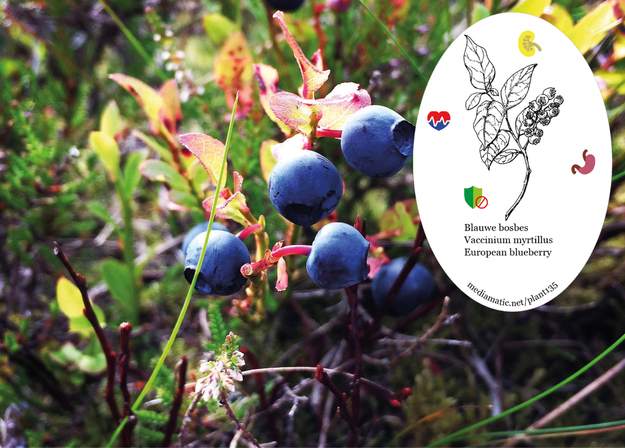The dried leaves of bilberries are used in the treatment of a variety of complaints. These leaves should be harvested in early autumn, only green leaves being selected, and then dried in gentle heat. The leaves should not be used medicinally for more than 3 weeks at a time. A tea made from the dried leaves is strongly astringent, diuretic, tonic and an antiseptic for the urinary tract. It is also a remedy for diabetes if taken for a prolonged period. Another report says that the leaves can be helpful in pre-diabetic states but that they are not an alternative to conventional treatment. The leaves contain glucoquinones, which reduce the levels of sugar in the blood. A decoction of the leaves or bark is applied locally in the treatment of ulcers and in ulceration of the mouth and throat. A distilled water made from the leaves is an excellent eyewash for soothing inflamed or sore eyes. Whilst the fresh fruit has a slightly laxative effect upon the body, when dried it is astringent and is commonly used in the treatment of diarrhoea etc. The dried fruit is also antibacterial and a decoction is useful for treating diarrhoea in children. The skin of the fruits contains anthocyanin and is specific in the treatment of hemeralopia (day-blindness). The fruit is a rich source of anthocyanosides, which have been shown experimentally to dilate the blood vessels, this makes it a potentially valuable treatment for varicose veins, haemorrhoids and capillary fragility. Source: https://pfaf.org/
European blueberry
Vaccinium myrtillus
Find more about this plant on Wikipedia.

European Blueberry - Vaccinium myrtillus Author: Morgan Owen